Fire and the foothills: reducing wildfire threats while boosting biodiversity
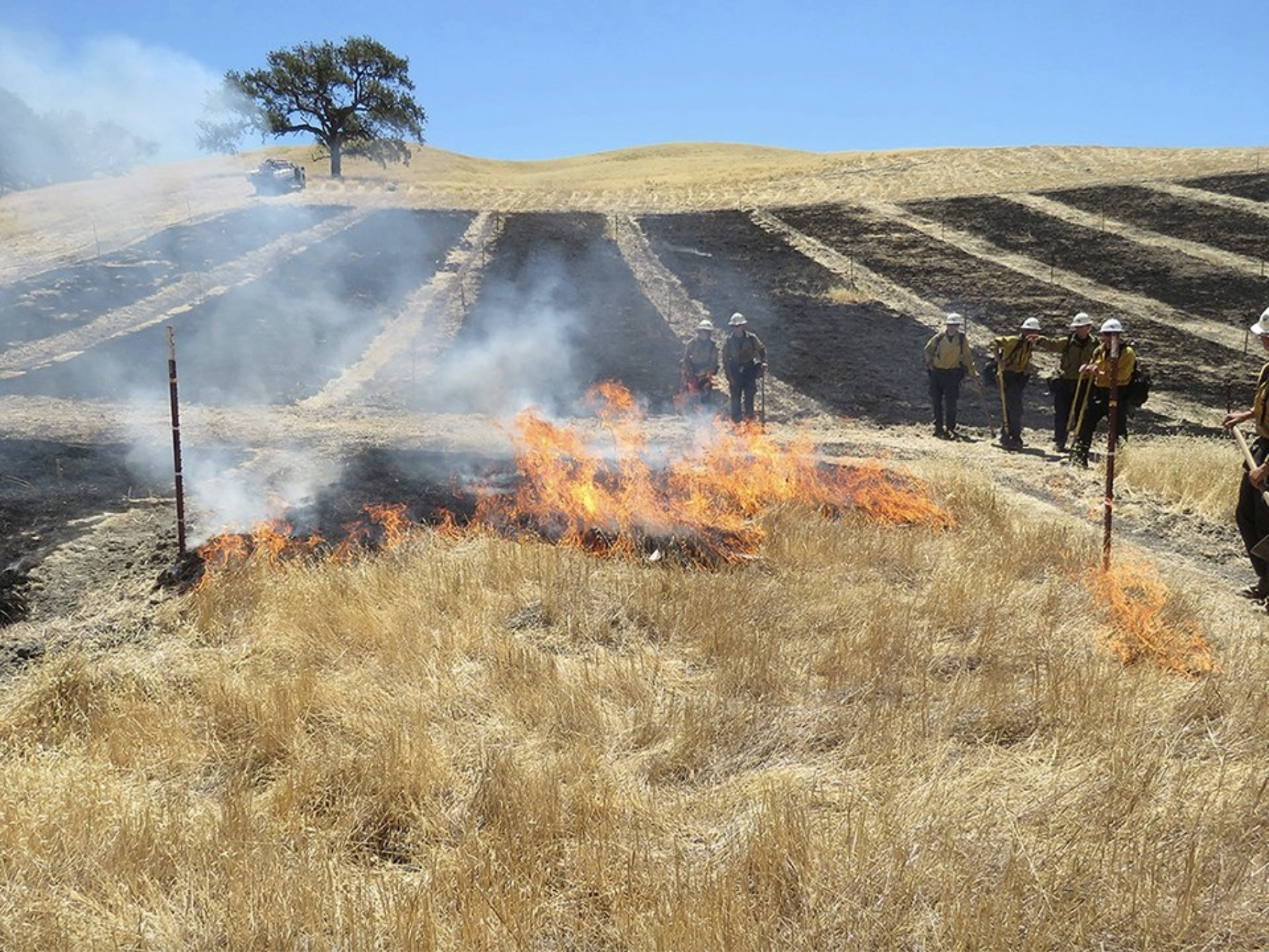
The foothills of California are familiar to anyone who has ventured into county parks to hike: iconic oak savannas, chaparral-covered hillslopes, and grasslands. They encircle the Central Valley like a bathtub ring, and include much of the Coast and Transverse ranges. Ranging from a few hundred to a few thousand feet in elevation, the foothills have become popular in recent decades as beautiful places from which to telecommute or retire in.
But in recent years, record-shattering wildfires have been roaring across vast swaths of California’s foothills. A century of fire suppression, plus the incursion of larger human communities, has put these landscapes in the crosshairs of extreme fire risk.
Despite the looming danger of combustion, foothill habitats have not been a locus of current research. “A lot of the fire science that’s happened in California has mainly been at higher elevations in the conifer forest and chaparral. We haven’t had the same level of experimental research in other ecosystem types,” says Frank Davis, a professor of landscape ecology and conservation planning at UC Santa Barbara.
Fire research at two UC Natural Reserves promise to fill this knowledge gap. Researchers at Blue Oak Ranch Reserve east of San Jose, and Sedgwick Reserve in the Santa Ynez Valley, are using science to evaluate how best to remove fire fuels from the land. What they find promises to make the foothills both safer for people and improve conditions for native wildlife.
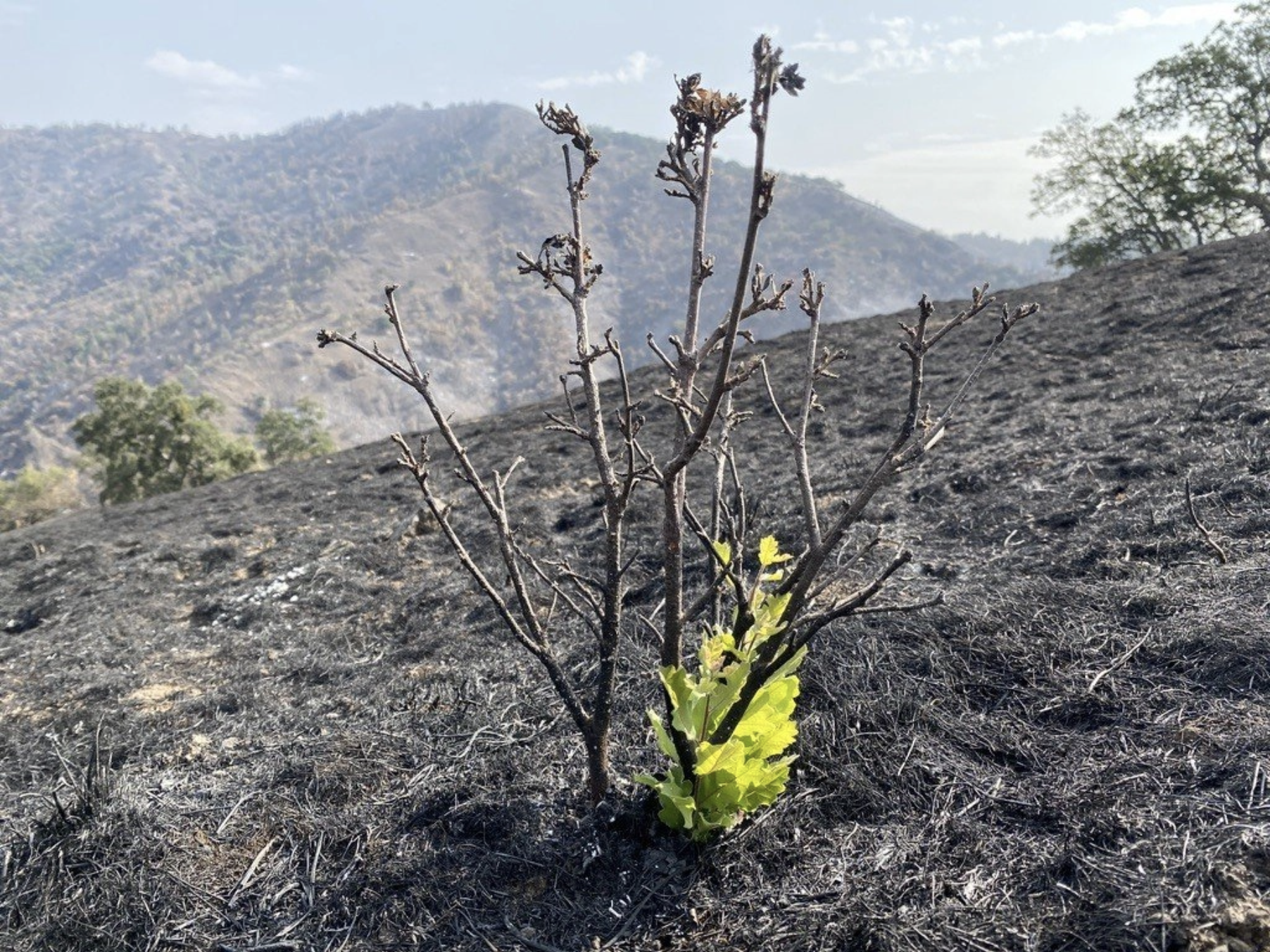
The way it was
Fire has long been the oldest and most effective tool for managing vegetation in the Golden State. “Native Californians probably used fire frequently in these systems, so these landscapes were full of plants and animals that have a long history with fire,” Davis says.
The blazes set by California’s first peoples were completely unlike the terrifying conflagrations that dominate today’s headlines. Ignited regularly, these fires kept flammable vegetation levels low. The resulting burns were likely much smaller and less intense.
The Europeans who followed added grazers while continuing to burn to maintain rangelands. Their herds of cattle and sheep consumed a lot of vegetation, but also introduced another fire hazard: non-native annual grasses.
These invasive plants are now ubiquitous across most foothill areas. Slender wild oat grass alone, says Blue Oak Ranch Reserve director Zac Harlow, “is probably the most abundant species by individual in California.”
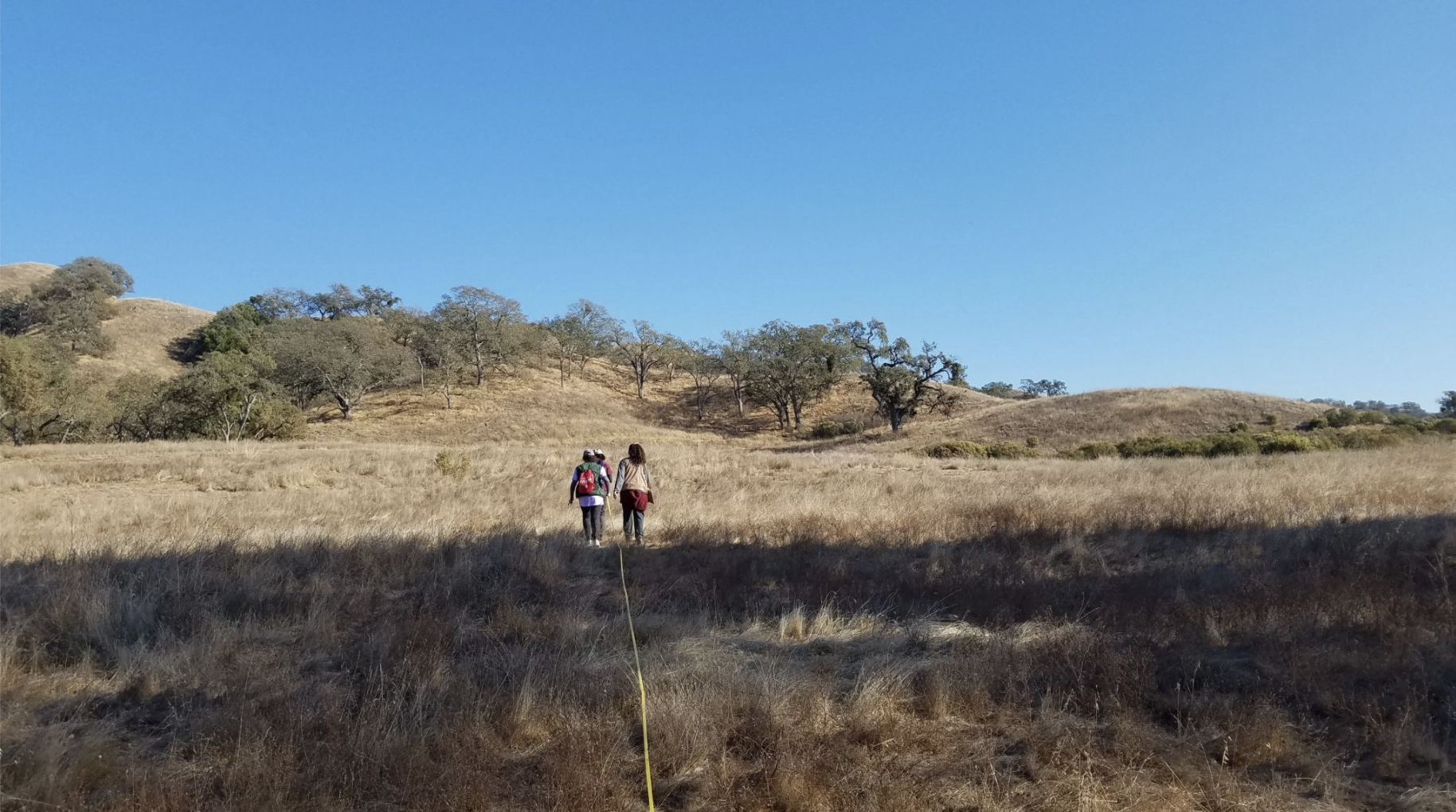
The threat of thatch
The dead stalks of these grasses pile up year after year to form a thatch that shades out native wildflowers. Meanwhile, the cows that once ate that thatch have been displaced in many cases by residential suburbs.
“People have managed these areas for thousands of years with fire, then a couple of centuries with cows. We’re now managing them with fire engines. My ultimate hope is that we learn how to live with and manage fire in these systems in a way that’s sustainable, both economically and ecologically, and makes sense in a changing climate,” Davis says.
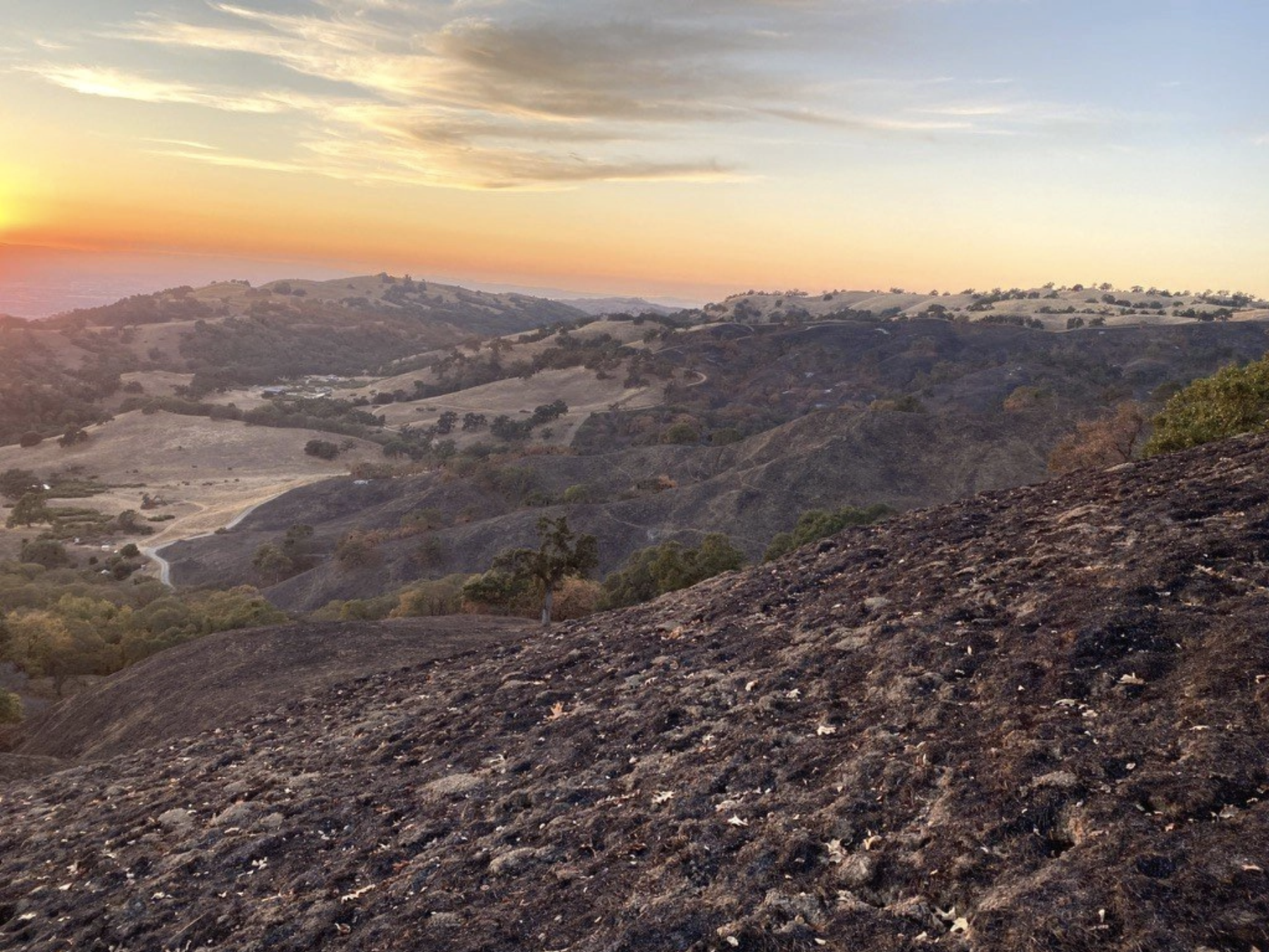
Grazing away overgrowth
Blue Oak Ranch, managed by UC Berkeley, has already had an unwelcome taste of how fierce modern wildfires can be. In 2020, the SCU Lightning Complex Fire set roughly half of the 3,200-acre reserve ablaze. It was just one of nine NRS reserves burned by wildfire that fall.
Ironically, areas burned by wildfire aren’t as useful to study as managed fires. “You don’t know what was there before well enough to infer very much. You don’t know what the fire behavior was when wildfires go through,” Davis says.
Blue Oak Ranch staff have long kept the vegetation around its headquarters trimmed short as a precaution against fire. When timed correctly, mowing can also keep invasive grasses at bay while promoting native species. The reserve gets maximum benefits by taking advantage of differences in native and invasive plant growth habits; steward Zac Tuthill mows after invasive grasses have completed much of their annual growth, but before native wildflowers swing into full gear. However, the reserve is simply too vast to mow in its entirety.
Instead, Harlow is looking to an older method of vegetation management at the reserve: grazing. As its name implies, Blue Oak Ranch Reserve land produced cattle for about a century. But the property has been cow-free for the past three decades or so.
“We are to my knowledge the only property in the Diablo Range that doesn’t have grazing,” Harlow says.
This fall, Harlow will begin a pilot program to reintroduce cattle to 100 acres of the reserve for three to five years, supplemented by prescribed burns in the near future.
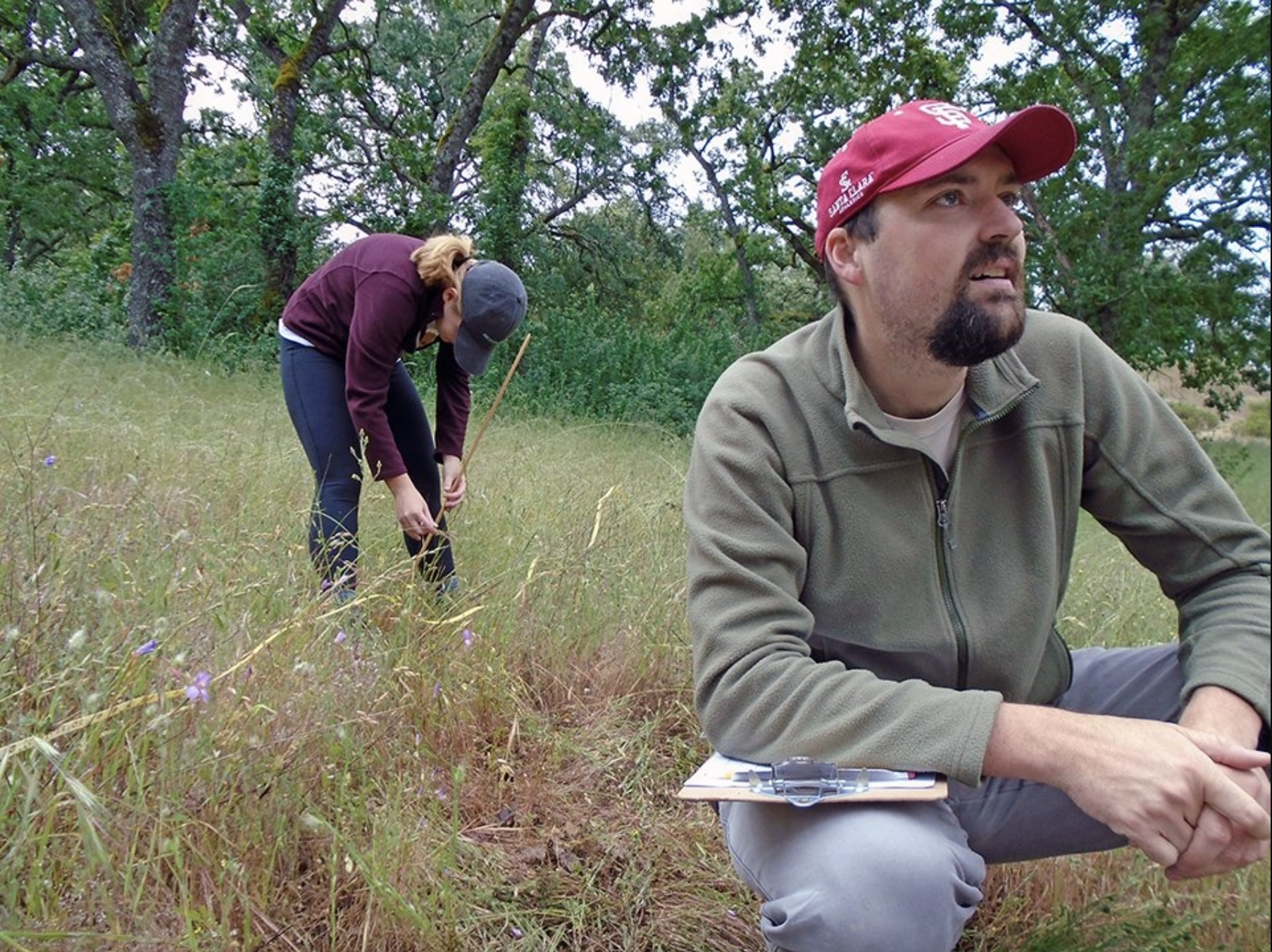
The plant perspective
Chances to study such treatments from their inception are rare, says Professor Brody Sandel of Santa Clara University. “Usually the cattle just arrive, and no one has assessed in a systematic way what things look like beforehand.”
Sandel is examining how plants respond to grazing, burning, and mowing on the vegetation at Blue Oak Ranch Reserve. Each spring, he plans to survey plant species growing in treated areas, and compare them to species in similar untreated plots. After the growing season ends in late summer, he will snip the remaining vegetation in the study areas, dry it, and weigh it. The residual dry matter that remains is a measure of how thorough each treatment was at removing plant cover.
“We’re looking for how much biomass removal we can get away with before diversity starts suffering and erosion starts happening,” Sandel says
Ideally, the treatments would also boost populations of native wildflowers while also loosening the stranglehold of invasive annual grasses. “There’s probably a good seed bank underneath the thatch of native forbs that are hanging out waiting for an opportunity. So I’m optimistic we’ll be able to find a good balance between fuel reduction and increasing diversity.” Sandel says.
Sandel will also collaborate with Blue Oak Ranch Reserve staff on a reserve project to examine how fire affects native tree species. A previous researcher tagged and measured about 500 trees within and adjacent to the reserve’s last prescribed burn, held in 1999. More recently, two reserve interns re-measured all of these trees. Together with drone images from the NRS’s California Heartbeat Initiative, this effort will illuminate how burning has affected trees of different ages, and which species are more likely to die after a burn.
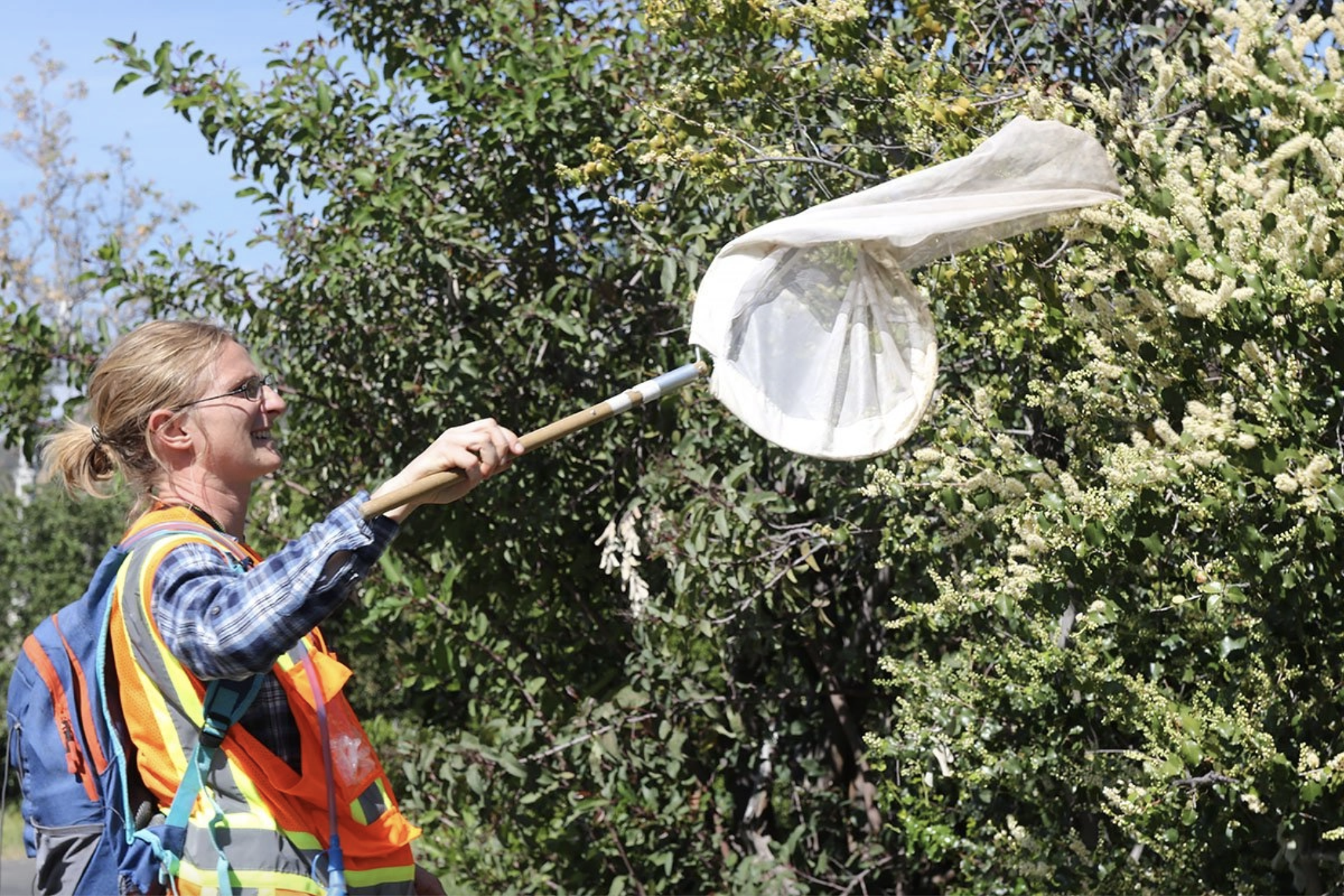
The buzz on pollinator biodiversity
While interventions like grazing can do wonders for native plants, “pretty much no research has been done on how that affects the pollinators. This is important to understand if you want to preserve flowering plants that require animals for pollination,” says Jenny Hazlehurst. A professor at Cal State East Bay, Hazlehurst and her students will be measuring how Blue Oak Ranch fuels reduction treatments affect bees, butterflies, flies, and other pollinator species.
“The more pollinators you have on grassland is a rough metric of how well the stewardship is working,” Harlow says.
This spring, Hazlehurst and her students spent several days comparing pollination events in treated and untreated areas. “We spend a lot of time just staring at flowers, hoping that something will come to visit. So you get very good at being patient and just enjoying your surroundings,” Hazlehurst says.
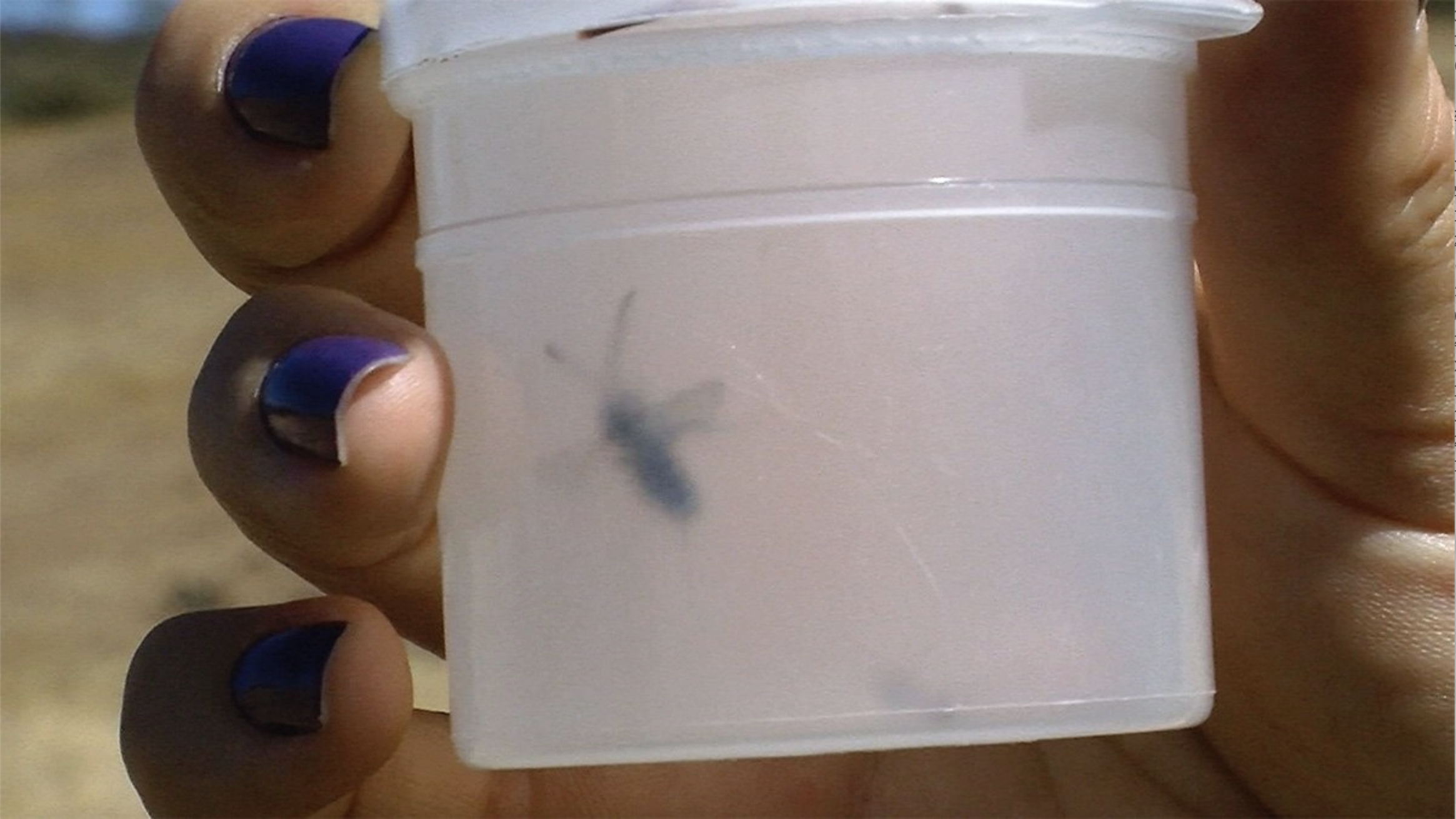
Pollinator sampling
Hazlehurst and her students are also sampling these insect visitors. They flick classic butterfly nets atop their quarry, lay out yellow, white, or pink dishes that lure arthropods into a puddle of soapy water, and even nab some individuals by hand.
“We get really good at sneaking up on pollinators. While they’re inside of flowers, sometimes they’ll be so busy collecting pollen or looking for nectar that you can actually pop a vial right on top of them,” Hazlehurst says.
Specimens are critical to identify pollinator species. “In some cases we actually have to consult with specific taxonomic experts. For a lot of our polllinators in California, like solitary bees, we don’t have identification keys that go down to species level,” Hazlehurst says.
Hazlehurst expects to find differences between the types of pollinators found in treated versus unmowed areas. Both the types of plants growing in a habitat as well as the availability of nesting areas have an influence. Ultimately she hopes to suggest ways to boost populations of certain species, using tricks such as leaving areas of bare dirt where solitary bees can dig chambers for their eggs.
The advantage of a reserve burn
Other scientists will survey birds and other wildlife as well in treated areas.
“We’re utilizing the fact that this is a university property. We have a lot of visiting researchers and classes here, and are encouraging them to help gather data whenever possible,” Harlow says.
Both Hazlehurst and Sandel will receive support for their work from the land stewardship program funded by the donor of Blue Oak Ranch Reserve.
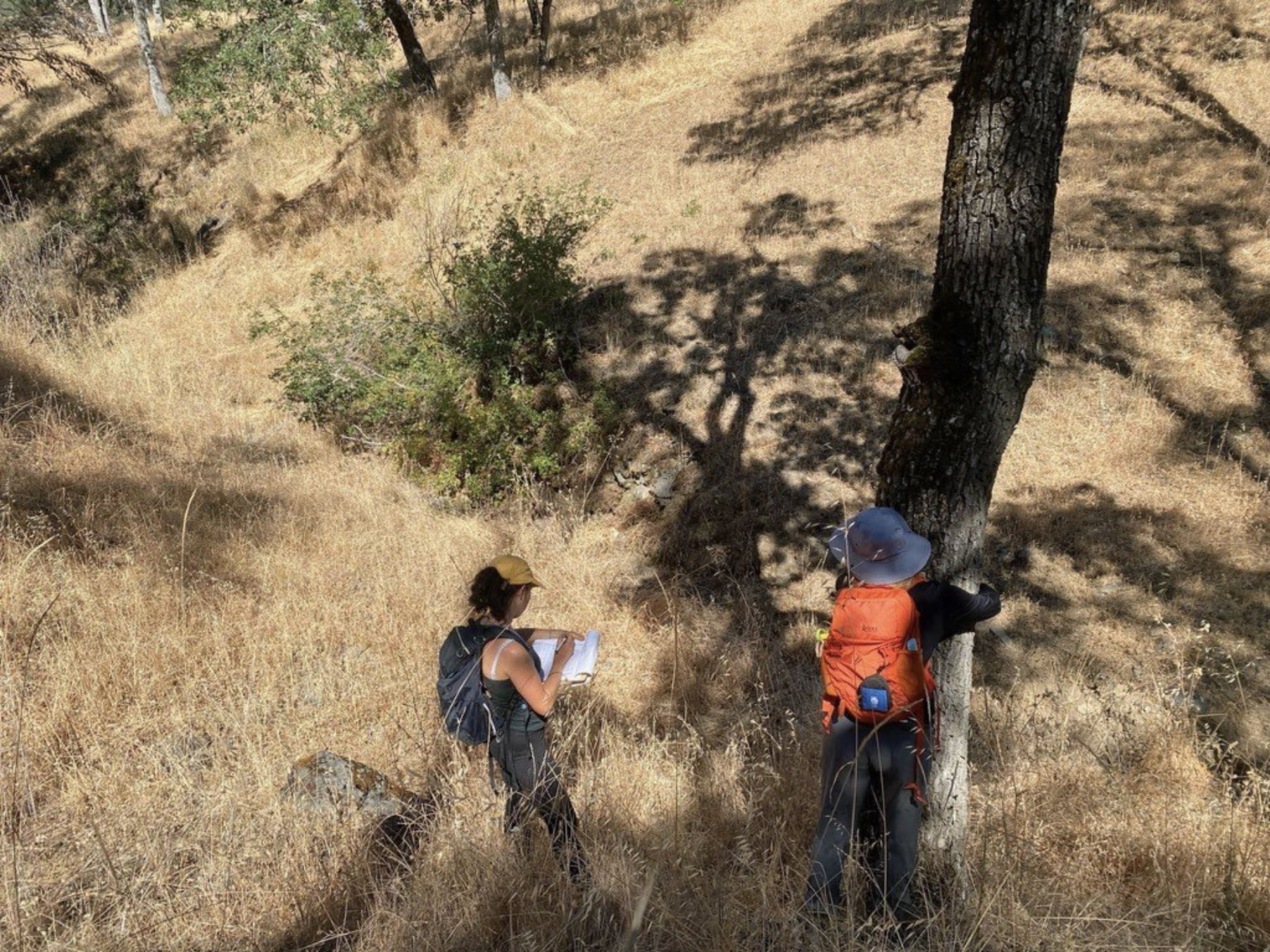
Working with fire professionals
At Sedgwick Reserve, managed by UC Santa Barbara, Davis has been laying the foundation for a larger fire research program. “The advantage of the reserves is that you can tap the multiple disciplines on the campuses that are interested in fire, whether soil scientists or wildlife biologists or social scientists interested in human-wildfire interactions,” Davis says.
The work will be aided by an agreement between the reserve and CalFire. The agency will pay for fire crews to conduct and manage prescribed burns. In exchange, they have an opportunity to reduce the flammability of a community at high risk due to its proximity to open landscapes.
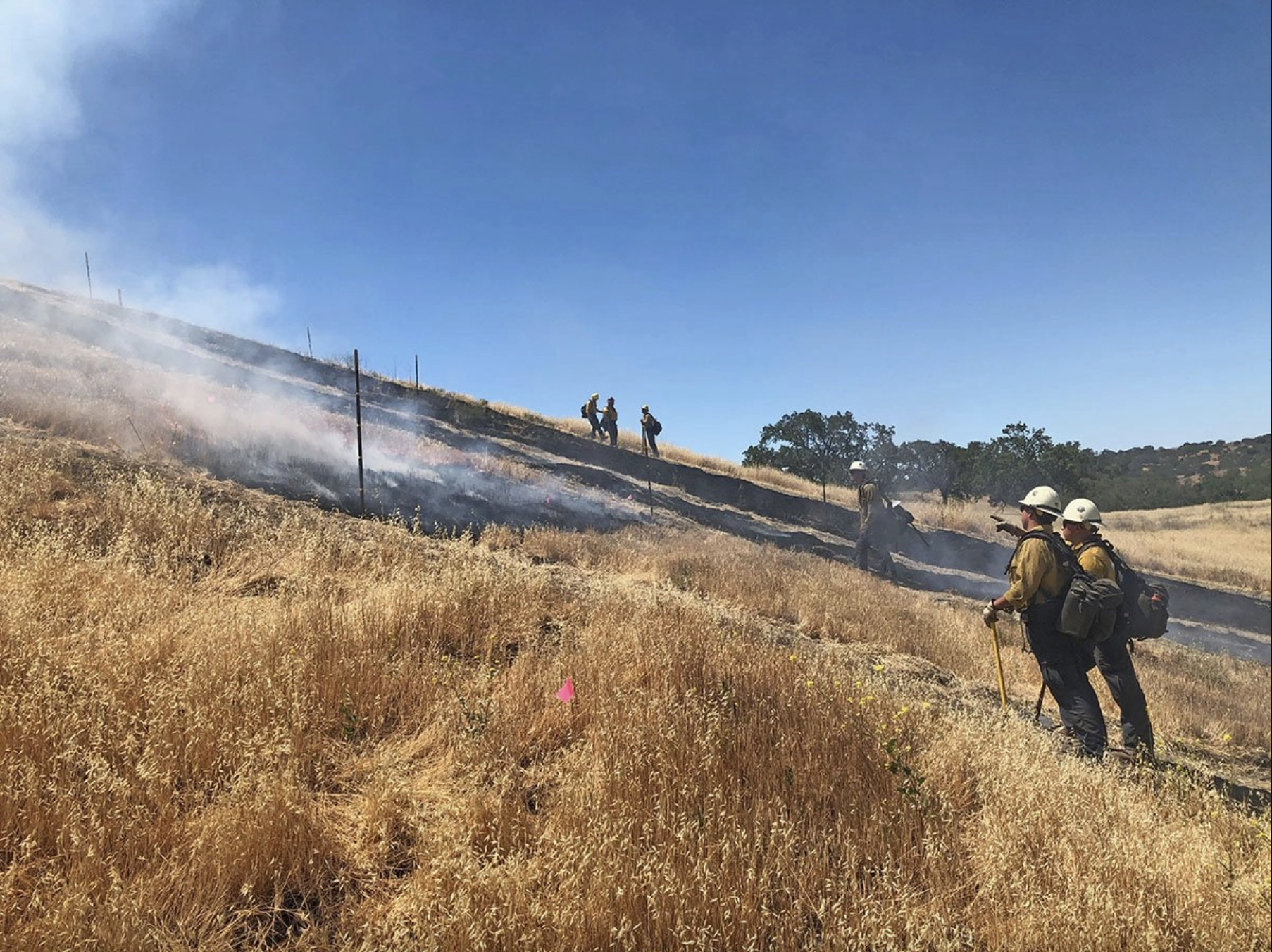
Experimental stripes
The program has already burned a three-acre plot a mile from Sedgwick headquarters. To simulate grazing, strips within the plot were mowed and raked to different degrees. Researchers then characterized the sites with drones and on the ground before they were set aflame. They also monitored the intensity of the burn as it progressed.
“We want to know what the relationship is between how hard you graze the range, and the fire behavior toward the end of the season,” Davis says.
Davis plans to ignite a second set of burns amid two additional types of habitat: coastal sage scrub and oak woodland. Dominated by sages and other soft-leaved shrubs, sage scrub is in fact the most widespread habitat on the reserve. This set of burns will be far larger, on the scale of several hundred to nearly 1,400 acres.
“One of the things we’re trying to understand is what kind of fire frequency would allow for sustaining this shrubland system, which aren’t adapted to burn all the time,” Davis says.
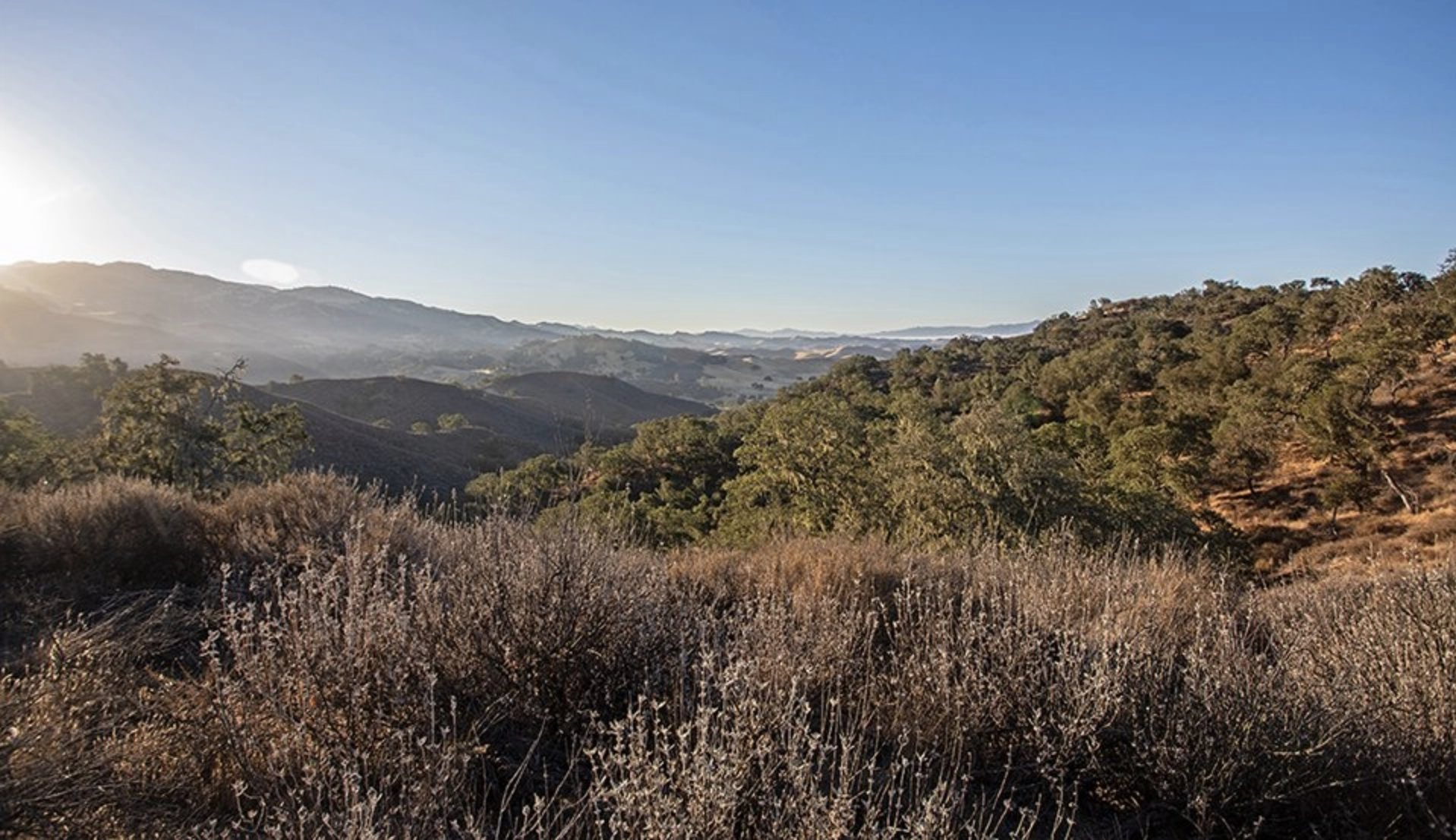
The need for a broader program
Davis hopes the Sedgwick fire collaboration will blossom into a long-term program to study the ecological effects of burning across different California habitats. He envisions establishing experimental fire units at dozens of NRS reserves. Some plots would be left alone, while others would be burned at various frequencies or “return intervals” ranging from 5 to 20 years.
Fire research centers already exist elsewhere. At Konza Prairie Biological Station in Kansas, and Tall Timbers in Florida, scientists have been studying the ecological effects of fire for upwards of 50 years. However, Davis says, “you can’t extrapolate what they’re learning about those systems directly to California. We’re a Mediterranean climate; their seasons are reversed from ours.”
Since fire risks in California are forecast to intensify, an ongoing source of research findings could be invaluable for preserving biodiversity while keeping people safer.
“What we’d like to do is find some kind of fire regime that is both desirable from a public safety point of view as well as from a biodiversity stewardship perspective,” Davis says.
